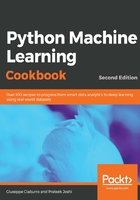
Introduction
Machine learning is a multidisciplinary field created at the intersection of, and with synergy between, computer science, statistics, neurobiology, and control theory. It has played a key role in various fields and has radically changed the vision of programming software. For humans, and more generally, for every living being, learning is a form of adaptation of a system to its environment through experience. This adaptation process must lead to improvement without human intervention. To achieve this goal, the system must be able to learn, which means that it must be able to extract useful information on a given problem by examining a series of examples associated with it.
If you are familiar with the basics of machine learning, you will certainly know what supervised learning is all about. To give you a quick refresher, supervised learning refers to building a machine learning model that is based on labeled samples. The algorithm generates a function which connects input values to a desired output via of a set of labeled examples, where each data input has its relative output data. This is used to construct predictive models. For example, if we build a system to estimate the price of a house based on various parameters, such as size, locality, and so on, we first need to create a database and label it. We need to tell our algorithm what parameters correspond to what prices. Based on this data, our algorithm will learn how to calculate the price of a house using the input parameters.
Unsupervised learning is in stark contrast to what we just discussed. There is no labeled data available here. The algorithm tries to acquire knowledge from general input without the help of a set of pre-classified examples that are used to build descriptive models. Let's assume that we have a bunch of data points, and we just want to separate them into multiple groups. We don't exactly know what the criteria of separation would be. So, an unsupervised learning algorithm will try to separate the given dataset into a fixed number of groups in the best possible way. We will discuss unsupervised learning in the upcoming chapters.
In the following recipes, we will look at various data preprocessing techniques.